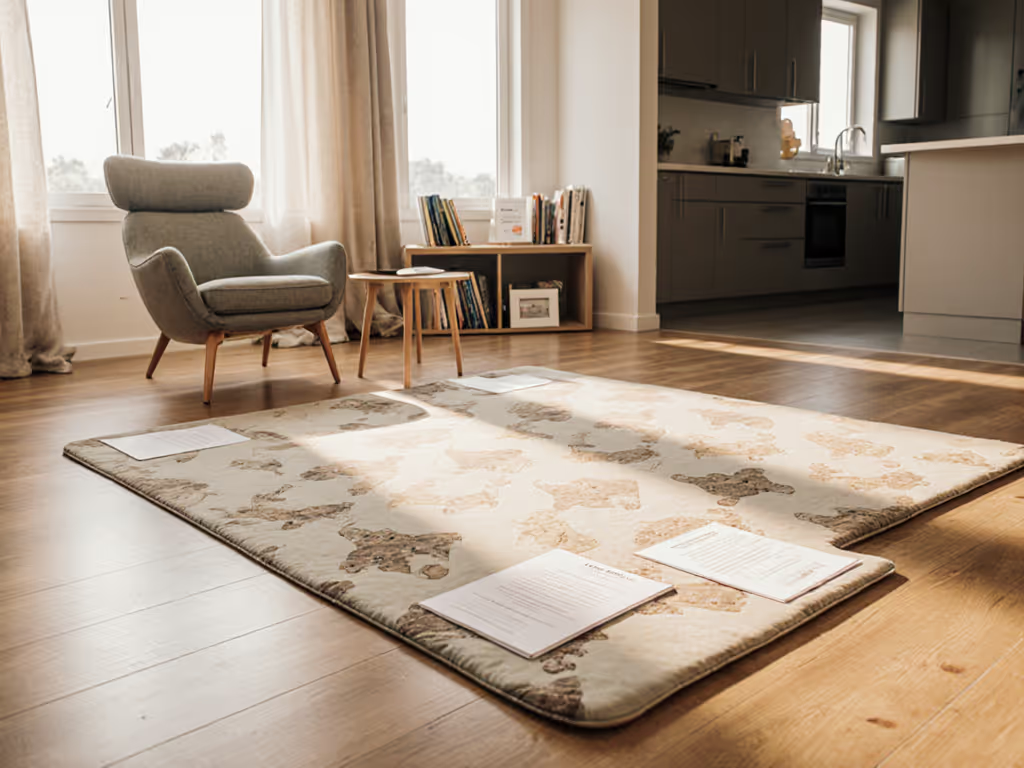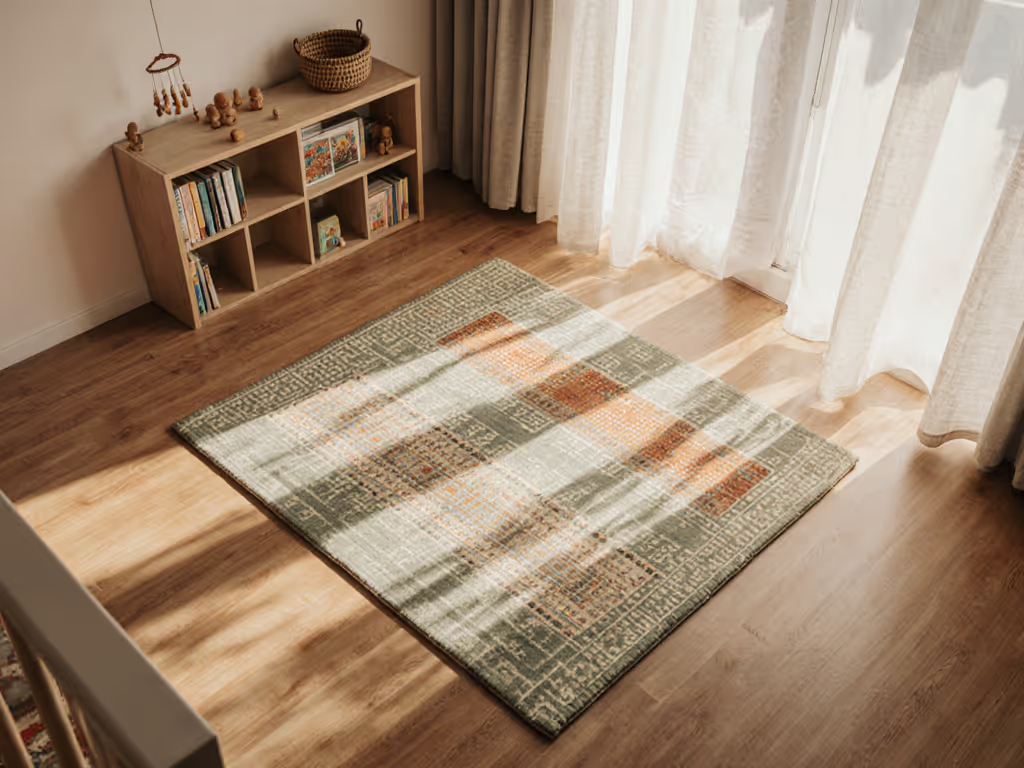
Types of Sensory Play Mats: Complete Family Guide
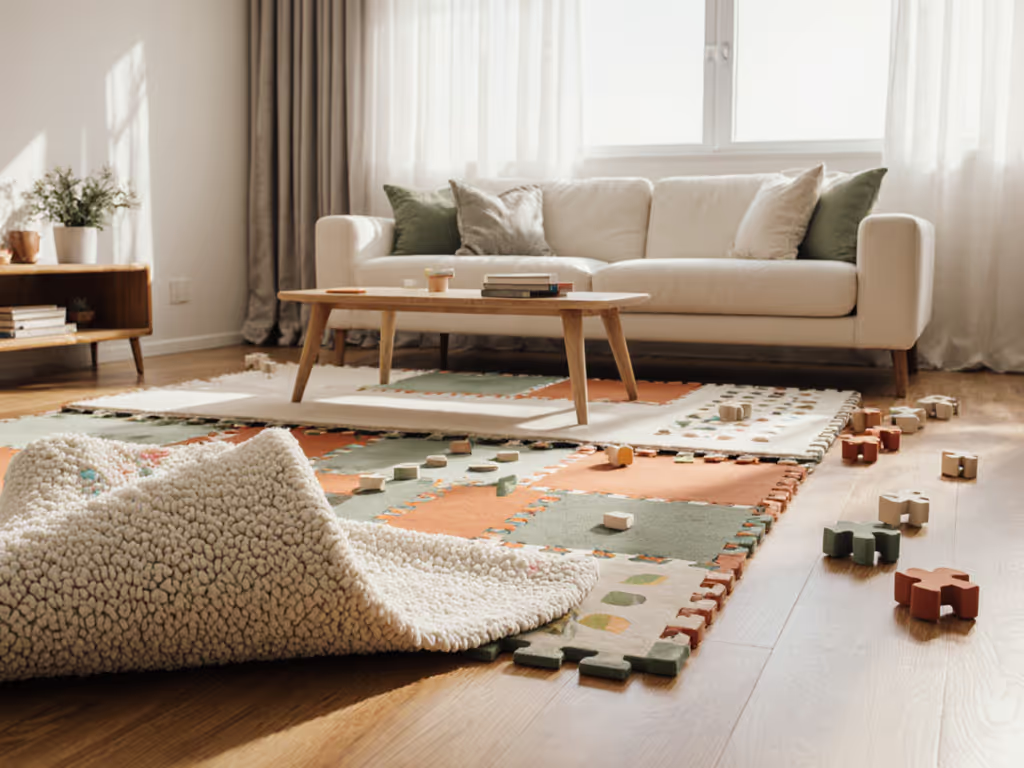
Babies learn about the world by touching, crawling, and exploring. Research shows that early sensory experiences can shape brain development for life. With every new texture or sound, a child’s mind grows stronger. That is why the right play space matters so much. Sensory play mats turn playtime into a world of discovery where children build skills, boost confidence, and enjoy learning through every sense.
Key Takeaways
| Point | Details |
|---|---|
| Multi-Sensory Engagement | Sensory play mats provide rich sensory experiences that foster motor skills, cognitive growth, emotional regulation, and language acquisition in young children. |
| Types of Mats | There are various types of sensory mats—traditional tactile, interactive digital, and specialized therapeutic—each catering to different developmental needs. |
| Material and Safety | Choose high-quality, non-toxic materials with safety certifications to ensure durability and minimize health risks for children. |
| Smart Purchasing | Avoid common mistakes like prioritizing price over quality; focus on age appropriateness and evaluate mats based on sensory diversity and adaptability. |
Sensory Play Mats Explained and Core Benefits
A sensory play mat transforms an ordinary floor space into a dynamic learning environment where children's natural curiosity meets critical developmental opportunities. These specialized surfaces aren't just soft spaces—they're intentionally designed platforms that engage multiple sensory systems simultaneously, helping infants and toddlers explore, learn, and grow through tactile interactions.
The core benefits of sensory play mats are profound and multifaceted. They support crucial developmental milestones by providing rich sensory experiences that stimulate:
- Motor skill development: Encouraging physical movement and spatial awareness
- Cognitive growth: Sparking curiosity through diverse textures and interactive elements
- Emotional regulation: Creating safe spaces for sensory exploration and stress relief
- Language acquisition: Promoting descriptive communication about different sensations
Children with diverse neurological profiles particularly benefit from these adaptive play environments. Sensory mats offer therapeutic advantages by reducing sensory overload and providing controlled, predictable spaces where children can comfortably engage their senses. Whether supporting a child with sensory processing differences or nurturing typical developmental progression, these mats represent more than simple play surfaces—they're carefully crafted developmental tools that transform learning into an exciting, multisensory adventure.
Research consistently demonstrates that structured sensory play significantly enhances early childhood development. By integrating touch, visual stimulation, and movement, sensory play mats create inclusive environments that support every child's unique learning journey.
Main Types of Sensory Play Mats Compared
Sensory play mats come in diverse designs, each engineered to stimulate different developmental pathways and sensory experiences. Understanding these variations helps parents select the most appropriate mat for their child's specific needs and developmental stage.
Traditional Tactile Exploration Mats
These classic sensory mats focus on physical texture variety. Featuring multiple fabric types, raised surfaces, and contrasting materials, they encourage direct sensory engagement. Key characteristics include:
- Soft, varied textile surfaces
- Embedded textural elements like bumps, ridges, and smooth patches
- Safe materials promoting tactile curiosity
- Designed for infants and early toddler exploration
Interactive Digital Sensory Mats
Building on technological innovations, interactive digital mats represent a cutting-edge approach to sensory play. Inspired by research like the Magicarpet project, these mats transform play into an immersive, responsive experience. They typically:
- Integrate motion-sensing technology
- Provide real-time feedback through lights or sounds
- Create game-based interactive environments
- Support cognitive development through technological engagement
Specialized Therapeutic Sensory Mats
Designed with neurodevelopmental considerations, these mats cater specifically to children with sensory processing differences. They offer structured, predictable sensory experiences that help manage potential overstimulation. Notable features include:
- Controlled sensory input levels
- Calming color schemes
- Weighted or pressure-responsive surfaces
- Designed to support emotional regulation
Whether traditional, digital, or therapeutic, each mat type offers unique developmental benefits.
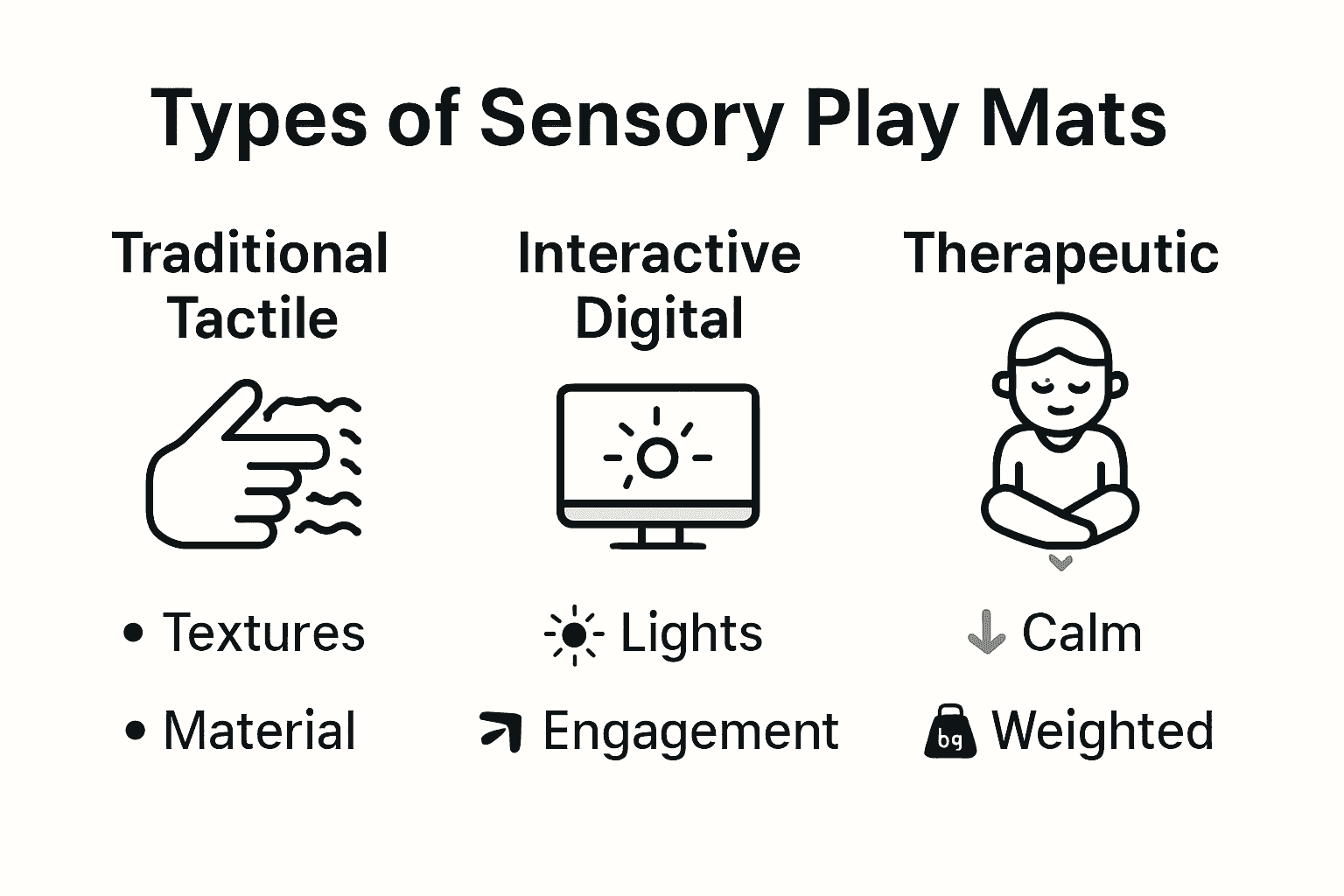 The key is matching the mat's design to your child's specific sensory needs and learning style.
The key is matching the mat's design to your child's specific sensory needs and learning style.
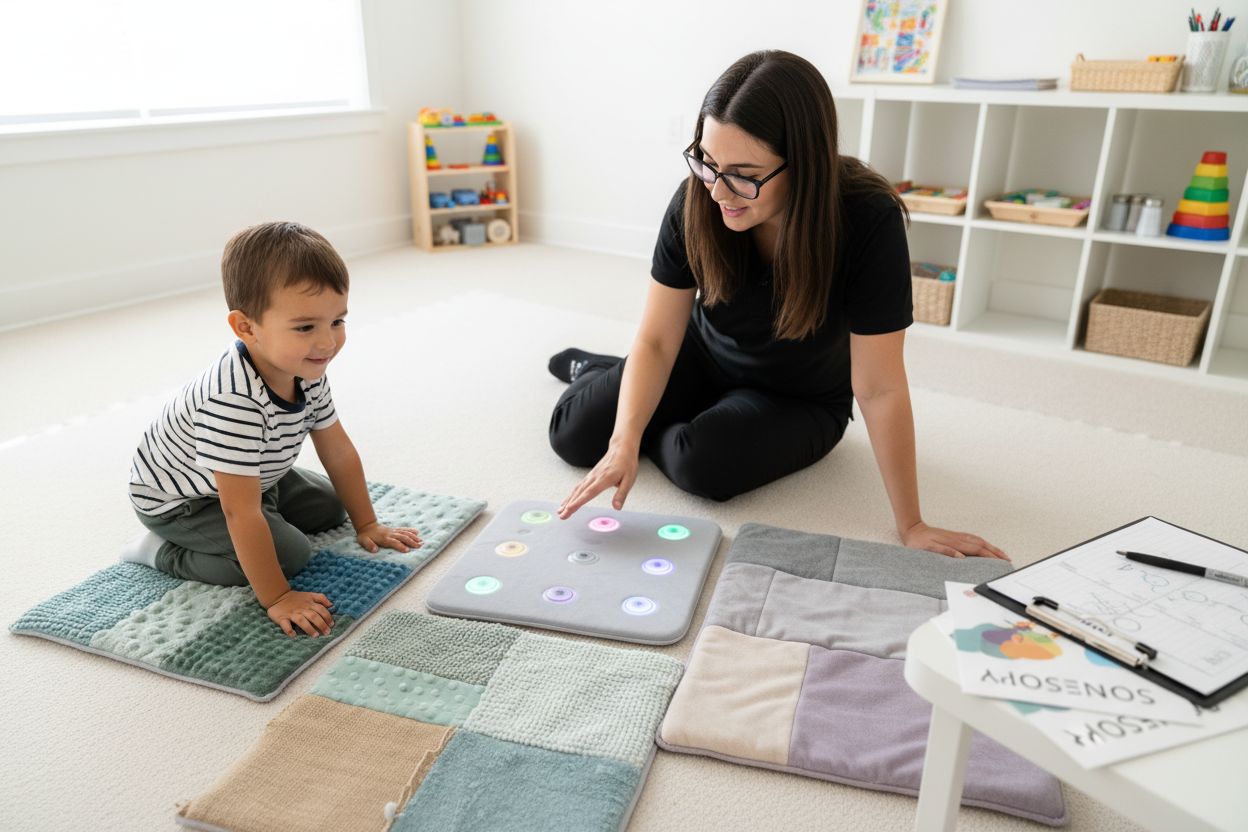
Here's a comparison of the main types of sensory play mats:
| Mat Type | Key Features | Best For |
|---|---|---|
| Traditional Tactile | Varied textures<br>Soft surfaces<br>Safe textiles | Infants<br>Early toddlers |
| Interactive Digital | Motion sensors<br>Lights & sounds<br>Game-based play | Tech-engaged toddlers<br>Cognitive growth |
| Therapeutic | Weighted zones<br>Calming colors<br>Controlled input | Sensory processing needs<br>Emotional regulation |
Materials, Textures, and Interactive Features
Sensory play mats are intricate developmental tools where material selection becomes a critical component of their effectiveness. The right combination of materials, textures, and interactive elements transforms a simple floor covering into a rich learning landscape that engages multiple sensory pathways.
Material Composition
Parents should prioritize materials that balance safety, durability, and sensory stimulation. High-quality sensory mats typically incorporate:
- Non-toxic silicone: Soft, hypoallergenic, and easily sanitized
- Memory foam: Provides cushioning and pressure-responsive feedback
- Natural cotton blends: Offers breathable, gentle textures
- Waterproof backing: Ensures easy cleaning and longevity
Texture Exploration Zones
Textural diversity is the heart of sensory mat design. Strategic variations in surface complexity invite children to explore and learn through touch. Effective mats often include:
- Raised geometric patterns
- Smooth and bumpy surface alternations
- Ribbed or wavy textural transitions
- Temperature-neutral materials
Interactive Design Elements
Modern sensory mats go beyond passive surfaces, integrating interactive features that respond to movement and touch. These might include:
- Sound-generating zones
- Pressure-sensitive color changes
- Attachable/detachable sensory accessories
- Embedded lightweight learning components
The magic of sensory play mats lies in their ability to transform ordinary play into a nuanced, multisensory learning experience that adapts to each child's unique exploratory style.
Age Suitability and Developmental Support
Sensory play mats are dynamic developmental tools that evolve alongside a child's growth, offering targeted support for different developmental stages. Understanding how these mats adapt to changing needs helps parents make informed choices that maximize learning potential from infancy through early childhood.
Newborn to 6 Months: Foundation Building
During the earliest developmental phase, sensory mats serve critical foundational purposes:
- Supports tummy time activities
- Encourages initial hand-eye coordination
- Provides safe exploration environment
- Stimulates visual tracking and sensory awareness
- Helps develop neck and core muscle strength
6 to 18 Months: Exploratory Learning
As babies become more mobile, sensory mats transform into interactive learning platforms:
- Promotes crawling and initial movement skills
- Offers textural diversity for tactile exploration
- Supports emerging motor skill development
- Creates safe spaces for independent play
- Introduces cause-and-effect learning
18 Months to 3 Years: Cognitive Engagement
Toddlers require more complex sensory experiences that challenge growing cognitive abilities:
- Integrates problem-solving elements
- Supports imaginative play scenarios
- Encourages language development through interactive features
- Provides controlled sensory input
- Helps emotional regulation through structured play
For children with diverse neurological profiles, sensory mats offer additional therapeutic advantages. They create predictable, adaptable environments that support individual learning styles while reducing potential sensory overwhelm. The key is selecting mats that match your child's specific developmental stage and unique sensory needs.
Safety Standards, Cleaning, and Durability
Sensory play mats represent significant investments in a child's developmental journey, making safety, maintenance, and longevity paramount considerations for parents and caregivers. Understanding the critical elements of mat care ensures these valuable learning tools remain effective and safe throughout their lifecycle.
Safety Certification Standards
Top-quality sensory mats undergo rigorous safety testing to protect children's health and well-being:
- Non-toxic materials: Free from harmful chemicals like phthalates and latex
- Anti-slip surfaces: Prevent accidental sliding during play
- Hypoallergenic construction: Minimizes potential allergic reactions
- CE and ASTM certified: Meets international safety benchmarks
- Flame-retardant properties: Provides additional protective measures
Cleaning and Maintenance Protocols
Proper care extends the mat's lifespan and maintains its sensory effectiveness:
- Use mild, child-safe detergents
- Wipe clean with soft, damp cloths
- Avoid soaking or machine washing
- Air dry at room temperature
- Keep away from direct sunlight to prevent material degradation
Durability and Longevity Factors
Investing in a high-quality sensory mat means understanding its expected performance:
- Reinforced material edges
- Water-resistant backing
- Puncture-resistant surfaces
- Washable without losing textural integrity
- Designed to withstand repeated child interactions
The most effective sensory mats balance safety, ease of maintenance, and developmental support. Regular inspection for wear and tear, combined with proper cleaning techniques, ensures these essential play tools continue supporting your child's sensory exploration and learning journey.
Common Buying Mistakes and Trusted Alternatives
Sensory play mats represent significant investments in a child's developmental journey, and making an informed purchase requires careful consideration. Understanding common pitfalls can help parents navigate the complex landscape of sensory mat selection and avoid potentially costly mistakes.
Frequent Purchasing Errors
Parents often fall into predictable traps when selecting sensory play mats:
- Prioritizing price over quality
- Overlooking age-appropriate design
- Ignoring material safety certifications
- Purchasing mats without considering child's specific sensory needs
- Selecting non-washable or difficult-to-maintain surfaces
Critical Selection Criteria
To make a wise investment, focus on these essential evaluation points:
- Developmental appropriateness: Match mat features to child's current stage
- Sensory diversity: Ensure multiple textural and interactive elements
- Safety certifications: Verify non-toxic, hypoallergenic materials
- Durability: Check reinforced construction and long-term usability
- Adaptability: Choose mats that can evolve with child's growing needs
Trusted Purchasing Strategies
Smart parents approach sensory mat selection through strategic research:
- Read detailed product reviews from child development professionals
- Request material safety data sheets
- Examine return and warranty policies
- Compare multiple options across different price points
- Consider consulting pediatric occupational therapists for personalized recommendations
Remember, the perfect sensory mat isn't about spending the most money—it's about finding a carefully designed tool that genuinely supports your child's unique developmental journey.
Find the Perfect Sensory Play Mat for Your Family
Struggling to find a sensory play mat that is not only safe and beautiful but also truly lasts through every stage of childhood? Most parents face the same challenge. It is overwhelming to sift through options that might look cute but lack essential safety certifications or do not actually support your child's unique sensory development. Families want a mat that promotes motor skills, offers real sensory diversity, and stands up to everyday play—all without hassle or worry. The article covered common mistakes like prioritizing price over quality and missing out on the best materials for sensory learning.
Now is the time to transform your search from stressful to simple. At FloorBloom, we offer expertly tested play mats that combine safety, lasting durability, and smart sensory design. Our mats support everything from newborn tummy time to active toddler play. Visit the home page and let real-home expertise guide you to the mat your child—and your whole family—will love for years to come. Explore your options today and bring confident, joyful play into your home.
Frequently Asked Questions
What are the core benefits of sensory play mats?
Sensory play mats support crucial developmental milestones by providing rich sensory experiences that stimulate motor skill development, cognitive growth, emotional regulation, and language acquisition.
How do different types of sensory play mats cater to specific developmental needs?
Traditional tactile exploration mats focus on texture variety for young infants, interactive digital mats promote cognitive engagement through technology for toddlers, and specialized therapeutic mats offer controlled sensory input for children with sensory processing differences.
What materials are commonly used in sensory play mats?
High-quality sensory mats typically incorporate non-toxic silicone, memory foam for cushioning, natural cotton blends for breathability, and waterproof backing for easy cleaning and durability.
How can I ensure the safety and durability of a sensory play mat?
Select mats that meet safety certification standards, utilize child-safe cleaning methods, and check for reinforced edges and puncture-resistant surfaces to maintain their effectiveness and longevity.
Related Articles

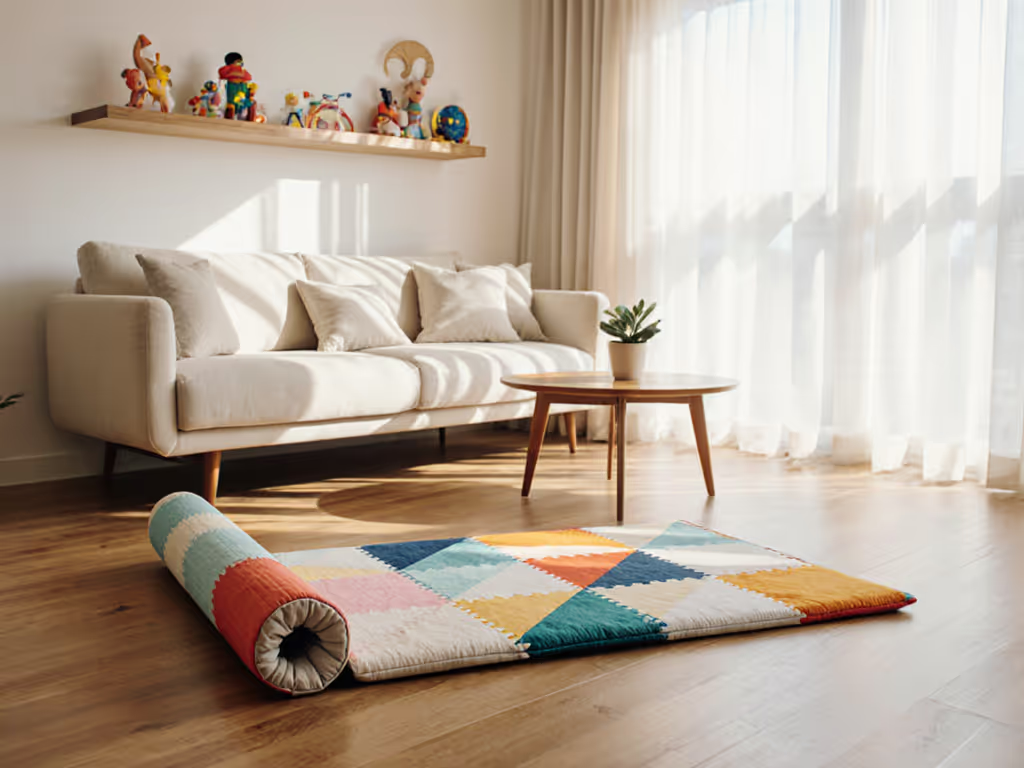
What Is a Foldable Play Mat? Complete Guide
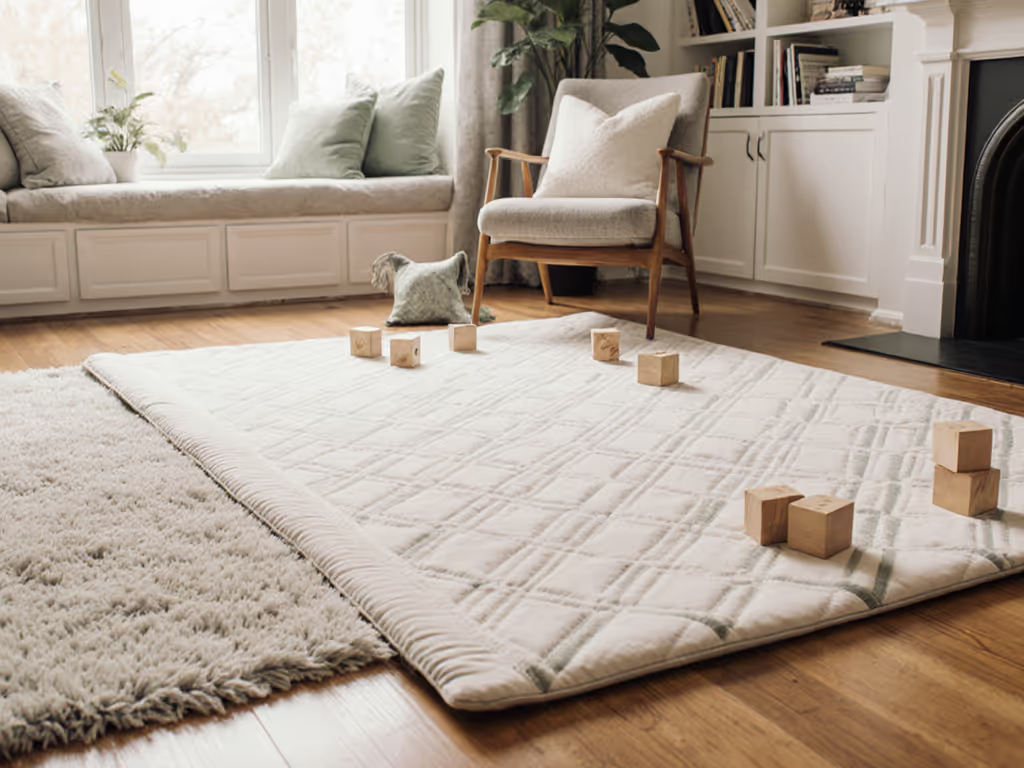
Role of Play Mats: Complete Guide for Safe Play Spaces
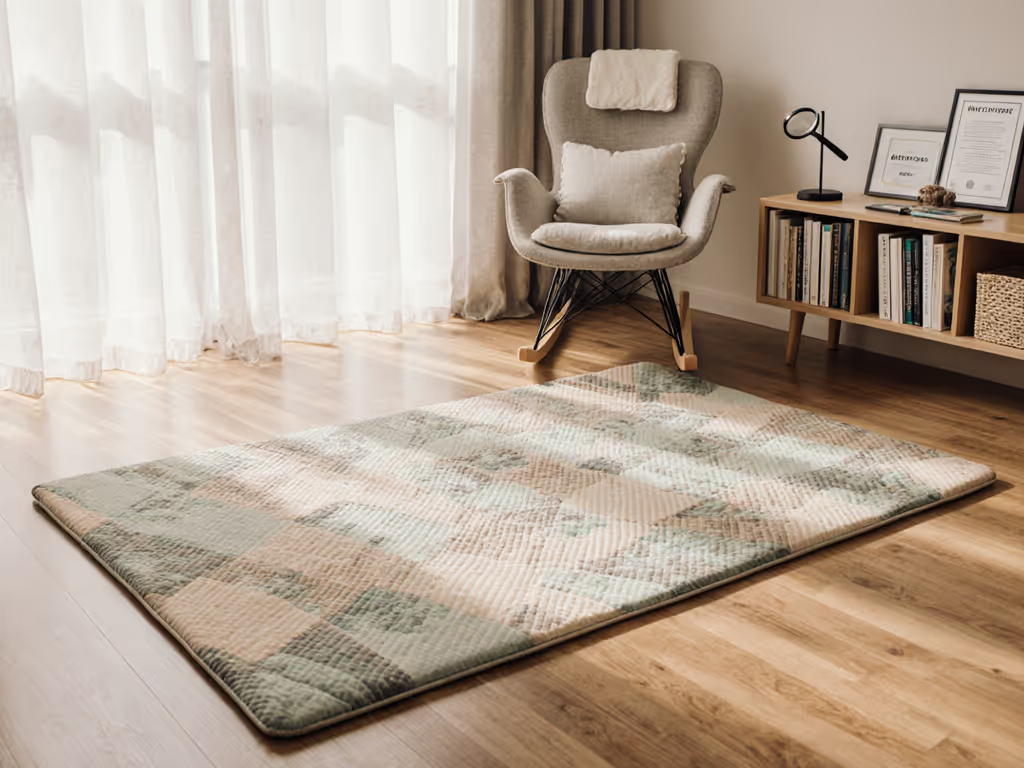
Play Mat Safety Standards Explained: Essential Guide
